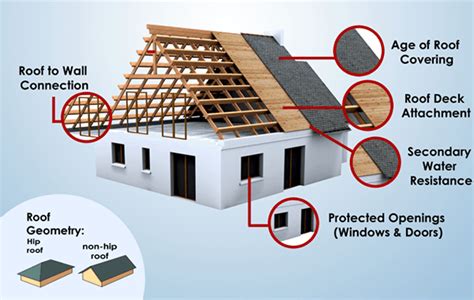The Fortified Roof Grant: Protecting What Matters Most
Protecting your home from the ravages of severe weather is a top priority for homeowners. The financial burden of roof damage can be devastating, leaving many feeling vulnerable and exposed. Fortunately, programs like the Fortified Roof Grant are designed to help alleviate this burden and encourage homeowners to invest in stronger, more resilient roofs. This article delves into the details of this crucial grant, exploring its benefits and how you can potentially qualify.
What is the Fortified Roof Grant?
The Fortified Roof Grant (the specific name may vary depending on your location and the program provider; this article uses "Fortified Roof Grant" as a general term for such programs) isn't a single, nationwide program. Instead, it represents a category of grants and initiatives offered by various organizations, including insurance companies, state governments, and community organizations. These programs aim to incentivize homeowners to upgrade their roofs to meet Fortified standards. Fortified is a building-science program developed by the Insurance Institute for Business & Home Safety (IBHS). It provides guidelines for building and retrofitting homes to withstand extreme weather events like hurricanes, tornadoes, and high winds. A Fortified roof is designed to resist damage, minimizing the risk of costly repairs or complete roof replacement.
The specific requirements and benefits of each Fortified Roof Grant will differ. Some may offer partial funding for materials, while others may include a combination of material and labor cost assistance. The level of financial support will typically depend on factors like your income level, the type of roofing materials used, and the overall project scope.
How Does a Fortified Roof Benefit Me?
Investing in a Fortified roof offers several key advantages beyond the potential grant funding:
- Enhanced Protection: A Fortified roof is significantly more resistant to damage from high winds, hail, and heavy rain. This translates to fewer repairs and less risk of major damage during severe weather.
- Increased Home Value: Investing in a stronger, more resilient roof can boost your home's value, making it a wise financial decision.
- Lower Insurance Premiums: In many cases, homeowners with Fortified roofs qualify for reduced insurance premiums. Insurance companies recognize the lower risk associated with these stronger structures.
- Peace of Mind: Knowing your home is better protected from the elements offers significant peace of mind.
Who Qualifies for a Fortified Roof Grant?
Eligibility criteria for Fortified Roof Grants vary significantly depending on the specific program and the funding organization. Common factors influencing eligibility include:
- Income Level: Many grants prioritize low-to-moderate-income households.
- Location: Grants often target specific geographic areas prone to severe weather events.
- Home Ownership: You'll typically need to be the homeowner to qualify.
- Roof Condition: The existing roof condition may need to meet specific criteria before grant funding is considered.
Where Can I Find a Fortified Roof Grant Program?
Finding a Fortified Roof Grant program requires research. Begin by contacting your:
- Local Government: Check with your city or county government for initiatives supporting home improvement and disaster preparedness.
- Insurance Company: Inquire with your homeowners insurance provider about any available grant programs or premium discounts for Fortified roofs.
- Community Organizations: Local nonprofits and community development organizations often offer assistance with home repairs and renovations.
- State Emergency Management Agency: These agencies may have information on state-level programs designed to help homeowners improve the resilience of their homes.
What Materials Are Typically Used in Fortified Roofs?
Fortified roofs frequently use high-quality roofing materials engineered to withstand extreme weather conditions. These materials may include:
- Impact-resistant shingles: These shingles are designed to resist damage from hail and high winds.
- Reinforced roofing underlayment: This adds an extra layer of protection to the roof deck.
- Properly installed fasteners: Secure fasteners are crucial for keeping the roofing materials in place during severe weather.
How Much Does a Fortified Roof Cost?
The cost of a Fortified roof varies based on factors like the size of your home, the materials used, and labor costs. It's generally more expensive than a standard roof, but the added protection and potential long-term savings can make it a worthwhile investment.
Is a Fortified Roof Right for Me?
Determining if a Fortified roof is right for you depends on several factors: your budget, the severity of weather events in your area, the condition of your current roof, and the availability of grant funding. Weighing the potential benefits against the costs and researching available grant programs will help you make an informed decision. A qualified roofing contractor can provide a detailed cost estimate and assess your roof's current condition.
This information provides a general overview of Fortified Roof Grants. Always conduct thorough research to identify programs in your area and understand their specific requirements and benefits. Remember to consult with qualified professionals for accurate assessments and reliable guidance.

